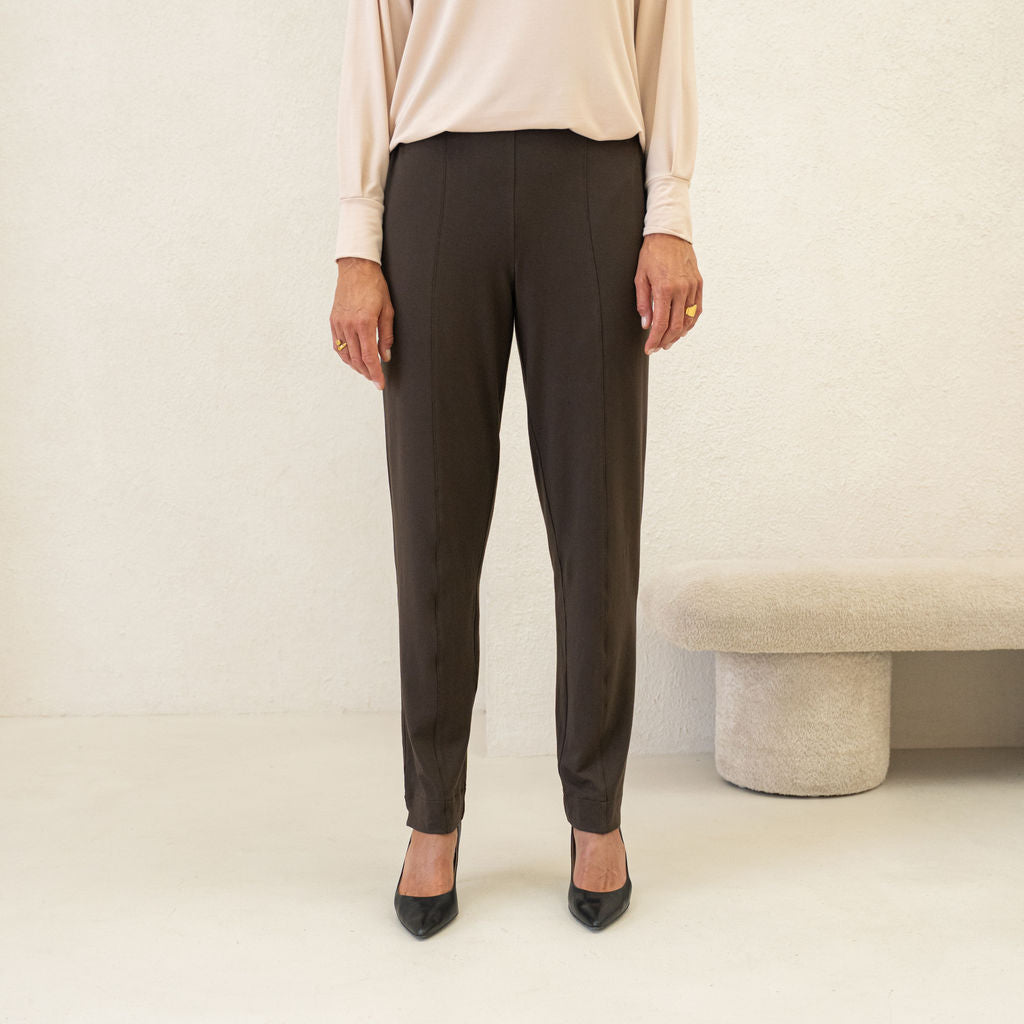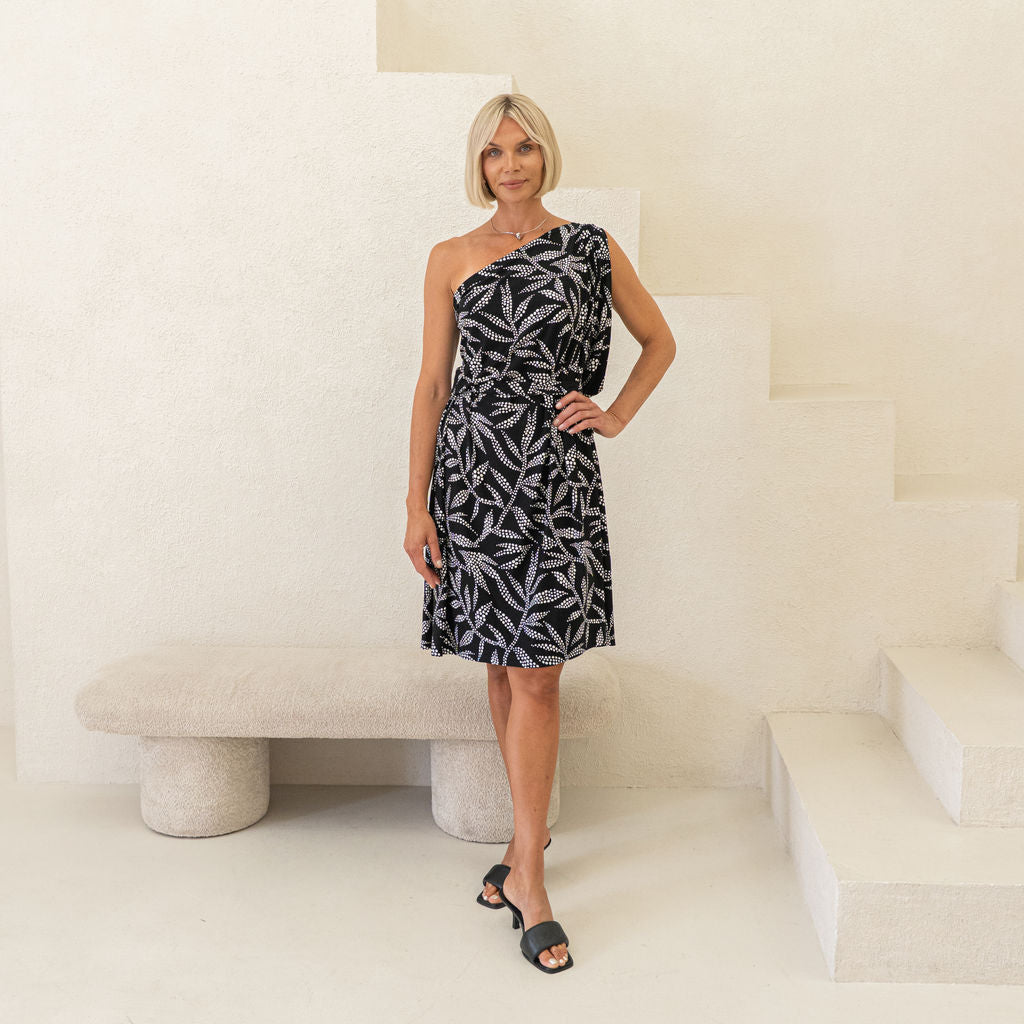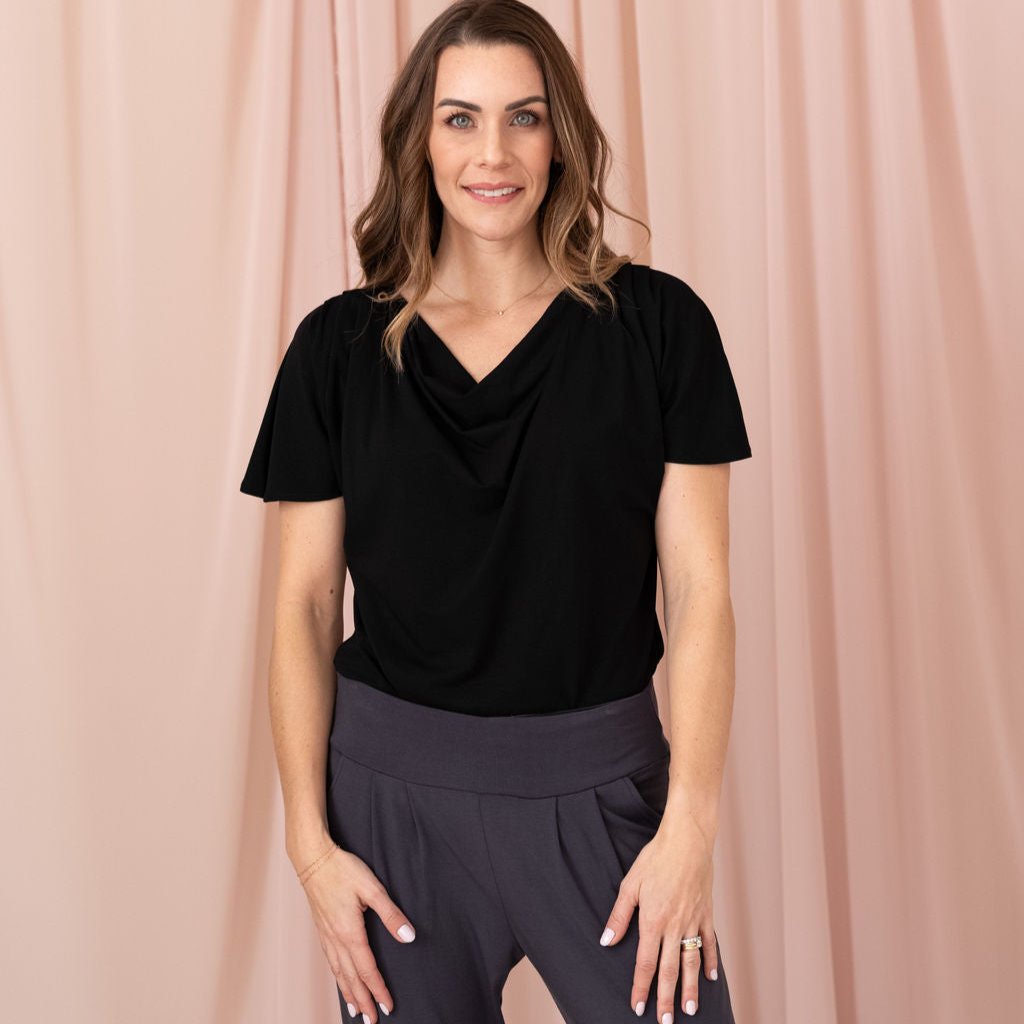The True Cost of a T-Shirt

Looking at a fast fashion t-shirt and a slow fashion t-shirt side-by-side, the differences may not be immediately apparent. But trust us, the differences are there and they’re significant. Using the example of a classic t-shirt, we want to talk about why sustainable clothing costs more, as well as the true cost of fast fashion.
Fast Fashion vs. Slow Fashion
First off, let’s talk about what we mean when we say “fast fashion” and “slow fashion”. Fast fashion refers to trendy clothing that is cheaply mass produced. The turnaround for fast fashion brands is fast (hence the term), with brands now producing about 52 “micro-seasons” a year. As fast fashion brands produce significantly more, the demand has increased to match. The world now consumes about 80 billion new pieces of clothing every year. This is 400% more than the amount we consumed just two decades ago.
Slow fashion on the other hand, is about slowing down our consumption and purchasing clothing more intentionally. It considers the environmental and human cost to producing clothing, advocating for better clothing that’s made to last. When a slow fashion piece is purchased, it’s done so with the intention of wearing it for years, not to own the latest trend for a season. By 2030, it is estimated the fashion industry will consume resources equivalent to two Earths, with the demand for clothing forecast to increase by 63 per cent. The fashion industry and our consumption patterns need to change, as this cycle simply isn’t sustainable.
The Fast Fashion T-Shirt
Have you ever wondered how brands are able to sell a t-shirt for the same price as a latte? When you think about the labour, materials, and cost of transporting the t-shirt overseas, compared to what goes into a drink, it seems absurd that we can assign these things a similar monetary value.
One of the primary reasons fast fashion brands are able to sell a t-shirt at such a low price point is the cost of labour overseas. Bangladesh is the second largest apparel manufacturer behind only China. The Monthly minimum wage in Bangladesh? A mere 95$ - well below the living wage. According to the 2015 documentary The True Cost, only 2 percent of garment workers are paid a living wage.
Each time a piece of fast fashion clothing is purchased, workers’ rights are part of the cost. Garment workers overseas typically work 14-16 hour days, 7 days a week, and they do so in appallingly unsafe working conditions. Brands need to be held accountable for the conditions in which their clothes are made, and as consumers we need to demand better from brands.

Fabric is the other significant cost that goes into clothing. Fast fashion is typically made out of cheap, unsustainable fabrics. According to the New York Times, “More than 60 percent of fabric fibers are now synthetics, derived from fossil fuels, so if and when our clothing ends up in a landfill (about 85 percent of textile waste in the United States goes to landfills or is incinerated), it will not decay.” In addition to using unsustainable fabrics, the dyes and chemicals they use to treat the fabric pose further issues, “17-20% of industrial water pollution comes from textile dyeing and treatment” . Not only are these chemicals polluting waterways, but workers are handling them without proper ventilation and safety measures, putting their health at risk.
Finally, the transportation cost of shipping garments overseas is another factor that needs to be considered when looking at a piece of clothing. The total greenhouse gas emissions related to textiles production are equal to more than those of all international flights and maritime shipping trips combined, according to the Ellen MacArthur Foundation.
The Slow Fashion T-Shirt
By purchasing a slow fashion t-shirt, you’re supporting worker’s rights. You’re supporting a fair minimum wage and safe working conditions. It’s important to note, just because a piece of clothing is made in North America doesn’t mean worker’s rights were respected. While it is much more likely that workers are being treated fairly, sweatshops do unfortunately exist in North America. In an ideal world, all brands would be transparent about where their clothing is manufactured and the regulations they follow. But for now, we’ll have to do the research and reach out to brands to ask for this information. We’re proud to include our Supplier Ethical Practices checklist and information on our factories on our website.

While sustainable fabrics are more costly, their environmental cost is substantially less. For example, Rayon from bamboo clothing is 100% biodegradable, so it won’t sit in landfill for years. Bamboo is also grown without pesticides, and it naturally regenerates. When it comes to dyeing fabrics, the regulations for wastewater disposal here in Canada are much more stringent than overseas, also reducing the environmental damage done. A sustainable slow fashion t-shirt would also be OEKO-TEX® Standard 100 certified to be free of harmful chemicals (as our fabrics are). Premium sustainable fabrics are inherently more expensive, and when you include having them knit and dyed in Canada the cost is even higher - though a worthwhile cost.
A locally-made slow fashion t-shirt is environmentally ideal. For example, our clothing is all made within 35km of our office. This significantly reduces our carbon emissions as well as packaging waste created when shipping internationally. The other benefit is that it allows us to maintain a close relationship with our suppliers, ensuring ethical production.
In the end, the slow fashion t-shirt will of course be more expensive given the use of premium sustainable fabrics and fairly paid labour. However, perhaps a more important calculation to make when considering the cost of clothing is the cost per wear - rather than just the price. If you’re unfamiliar with this term, it is essentially looking at how much an article of clothing will cost you each time you wear it. The fast fashion polyester t-shirt may only be $8, but you only wear it 15 times before it shows signs of wear and tear. Whereas the $50 slow fashion bamboo and organic cotton t-shirts can be worn 115 times. Meaning the slow fashion t-shirt would actually be a better investment for you and of course the environment. For more information on this calculation, read our blog post, “What Is Your Cost Per Wear? Calculate Yours in 1 Easy Step!”
For more information on sustainable fashion, check out these posts:
Did you make the switch to supporting slow fashion? Let us know why in the comments below!










2 comments
Such a helpful blog. https://bit.ly/3iB5bW7
I try to shop sustainably whenever I can. It does cost more and I don’t mind having less items. I want quality over quantity anyway. You won’t catch me in a $5 t-shirt. I am always looking for natural materials and I look at where the product was made. Encircled items are an investment. You can feel the difference immediately.
Leave a comment